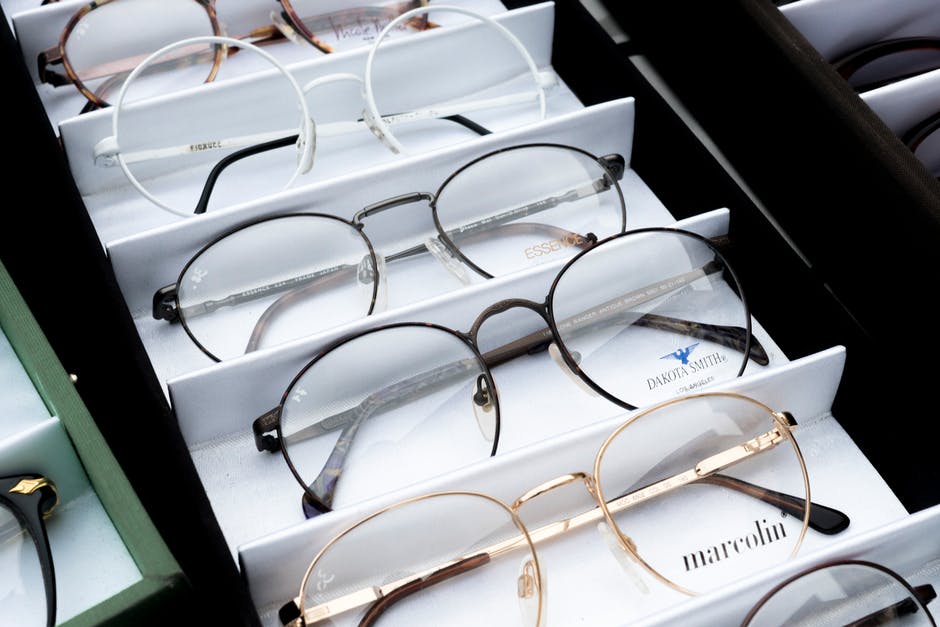Do You Know About the Different Types of Eyeglass Lenses? Find Out Now
When choosing the right eyewear, most of us tend to focus on the frames and whether they suit the shape of our face and our overall look.
However, it’s just as essential to make the right decisions about the lens material that goes into those frames. It can be hard to know where to start!
In fact, surveys show that 64.3 percent of Americans who wear prescription eyewear find this complicated.
In light of that, we've put together a guide to the best types of eyeglass lenses. It doesn't matter whether you’re short or long-sighted, need bifocal or multifocal lenses, or have astigmatism - we cover it all here in this article.
Finding the right lenses for your home, work, and leisure time is of paramount importance. So, if you want to enjoy the best possible vision and comfort that you can afford, continue reading.

What's the Refractive Index?
You may be wondering what we mean by refractive index. Put simply, the refractive index number of a lens is a measurement of how successfully and quickly the lens material bends or refracts the light that travels through the lens to your eye.
So, the higher the refractive index number of lens material, the slower the light passes through it, resulting in more bending of light rays.
A lens material that has a high refractive index will be thinner than a lens made of a material that has a lower refractive index.
1. Standard Plastic 1.5
This type of lens was first introduced by the Armorlite Lens Company in California in 1947 and remains a popular and lightweight choice today. Our high-clarity plastic lenses include a hard coating that helps prevent everyday scratches and damage.
This type of lens is also commonly referred to as the CR-39 lens and is often used for light prescriptions, that range from +/-1.75. CR-39 is an acronym for Columbia Resin 39, which was the 39th formulation of plastic developed in the 1940s.
The index of refraction of CR-39 plastic is 1.5.
2. Polycarbonate Lens
First developed in the 1970s for the Air Force and used for protection in safety appliances and security in banks, polycarbonate is a pretty impenetrable product.
Fast forward to the present day; the polycarbonate lens is highly durable and thinner than the traditional plastic lens. It’s a popular choice for eyeglass wearers because of its lasting qualities.
Our recommendation is to upgrade your lenses to our polycarbonate range. They are ideal for children’s glasses or if you play high-impact sports.
Our polycarbonate lenses are hard-coated and have superior high-impact resistance qualities and are 30 percent thinner than our standard plastic lens.
If you have a prescription of +/-2.00 to =/-4.00, then this is an ideal choice for you.
Both standard plastic and polycarbonate plastic lenses include all-important 100 percent UV protection. We all know that the sun is harmful to our skin, but it’s equally essential to protect our eyesight from powerful UV rays too.
The index of refraction of a polycarbonate lens is 1.586.
3. Trivex Lens
Initially made for military use, Trivex lens material is comparable in quality to polycarbonate, but it has better visual acuity, offering a sharper central and peripheral vision to the wearer.
Trivex first came on the market in 2001 and is the lightest lens material available. It is durable because it includes a hard coating that helps the wearer prevent scratches and consists of the all-important 100 percent UV protection.
The Trivex lens is the right choice if you’re keen to have superior quality lenses that can be used with any prescription. The index of refraction for the Trivex lens is 1.54.
4. High Index 1.67 Lens
An excellent choice for eyeglass wearers who want a thin and lightweight lens and want to avoid that “bug-eye” look that you sometimes get from standard plastic lenses. This lens is 45% lighter than our standard plastic lens.
We recommend this choice if your prescription has a sphere power between +/- 3.25 and +/- 8.00. The high index 1.67 lenses are also suitable for wearers of semi-rimless and drill mount frames.
There is a hard coating on the lens to help prevent scratches and damage, and it includes 100 percent UV protection. The 1.67 figure relates to the refractive index of this lens.
5. High Index 1.74 Lens
Here’s a lens that’s 50 percent thinner than our standard plastic or CR39 lens. We recommend this particular lens for eyeglass wearers that have a prescription that has a sphere power higher than +/- 8.00.
The high index 1.74 refractive lens also comes with a hard protective coating and includes 100 percent UV protection.
6. Glass Lenses
Although glass lenses are not used widely anymore for eyeglasses, there was a time when all eyeglass lenses were manufactured from glass.
Glass lenses do, in fact, offer excellent vision, but there are downsides. They are heavy, can potentially shatter easily, and cause significant damage to your eye.
Are You Ready to Find the Right Types of Eyeglass Lenses for You?
So there you have it, our guide to the different types of eyeglass lenses. We hope having read this article; you now have a better understanding of why it's so important to do your due diligence when choosing the right kinds of eyeglass lenses and frames.
If this has prompted you to do your own research, why not take a look at some of our favorite brands and offers today? If you have any questions about what we have to offer, please feel free to reach out and contact us. Speak soon!





